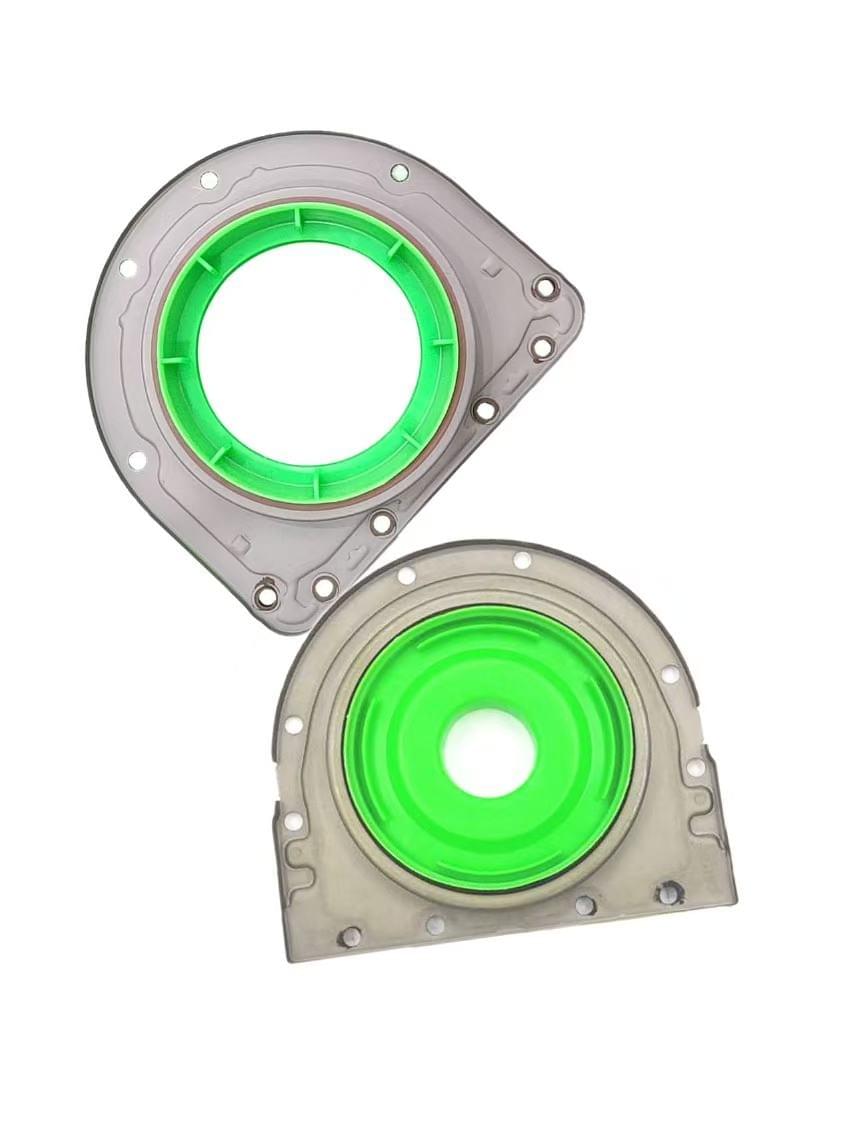
NTO oilseal
- …
NTO oilseal
- …
cranshaft oil seal
Our crankshaft oil seals are engineered to provide superior sealing performance in various applications. Designed for durability and reliability, these seals effectively prevent oil leaks and protect engine components from dirt and debris, ensuring optimal operation within automotive and industrial machinery.

crankshaft oil seal
Welcome to Nto oilseal
# **Crankshaft Oil Seal: Introduction, Features, and Applications**
## **1. Introduction**
The **crankshaft oil seal** (also called a **front/rear main seal**) is a critical component in internal combustion engines, designed to **prevent oil leakage** from the engine block while keeping contaminants (dirt, dust, and moisture) out. It is installed at both ends of the crankshaft—**front (timing cover side)** and **rear (transmission side)**—to maintain proper lubrication and ensure smooth engine operation.
A failing crankshaft seal can lead to **oil leaks, loss of lubrication, engine overheating, and even catastrophic engine damage**, making it essential for durability and performance.
---
## **2. Key Features of Crankshaft Oil Seals**
### **(1) Material Composition**
- **Sealing Lip**: Typically made from **Nitrile Rubber (NBR)**, **Fluoroelastomer (FKM/Viton®)**, or **Silicone (VMQ)** for resistance to heat, oil, and friction.
- **Metal Case**: Reinforced with **stainless steel or carbon steel** for structural rigidity.
- **Garter Spring**: A stainless steel spring ensures constant pressure against the crankshaft for a tight seal.
### **(2) Advanced Design**
- **Single-Lip or Double-Lip Construction**:
- **Single-lip**: Standard design for oil retention.
- **Double-lip**: Includes an additional dust lip to block contaminants.
- **PTFE (Teflon) Coating Option**: Reduces friction and improves durability in high-speed applications.
### **(3) Performance Characteristics**
- **Temperature Resistance**: Withstands **-40°C to +200°C** (-40°F to +392°F).
- **High-Speed Compatibility**: Suitable for engines with **RPMs exceeding 8,000**.
- **Chemical Resistance**: Resists engine oils, synthetic lubricants, fuel, and coolant exposure.
---
## **3. Applications of Crankshaft Oil Seals**
Crankshaft seals are used in nearly all **internal combustion engines**, including:
### **(1) Automotive Engines**
- **Passenger cars, trucks, and SUVs** (gasoline & diesel).
- **High-performance & racing engines** (turbocharged/supercharged applications).
- **Hybrid and electric vehicle (EV) auxiliary systems**.
### **(2) Industrial & Heavy Machinery**
- **Generators, construction equipment (excavators, bulldozers)**.
- **Marine engines (boats, ships)**.
- **Agricultural machinery (tractors, harvesters)**.
### **(3) Motorcycles & Small Engines**
- **Motorcycle crankshafts**.
- **Lawnmowers, chainsaws, and power tools**.
---
## **4. Signs of a Failing Crankshaft Oil Seal**
⚠ **Oil leaks** (visible drips under the engine).
⚠ **Low engine oil levels** (frequent top-ups required).
⚠ **Burning oil smell** (leaked oil contacting hot engine parts).
⚠ **Contamination in the timing belt area** (front seal failure).
⚠ **Engine noise or bearing damage** (due to oil starvation).
---
## **5. Maintenance & Replacement Tips**
✔ **Inspect regularly** during oil changes.
✔ **Use OEM or high-quality aftermarket seals** for longevity.
✔ **Ensure proper installation** (correct alignment to prevent leaks).
✔ **Replace timing belt/chain simultaneously** (if the front seal is damaged).
---
### **Conclusion**
The **crankshaft oil seal** is a small but vital engine component that ensures **efficient lubrication, prevents leaks, and protects against contaminants**. Choosing the right material (NBR, FKM, or PTFE) and design (single/double lip) based on application requirements can **extend engine life and improve reliability**.
**Need help selecting the best crankshaft seal for your engine?** Provide details (engine type, operating conditions), and we’ll recommend the optimal solution!





